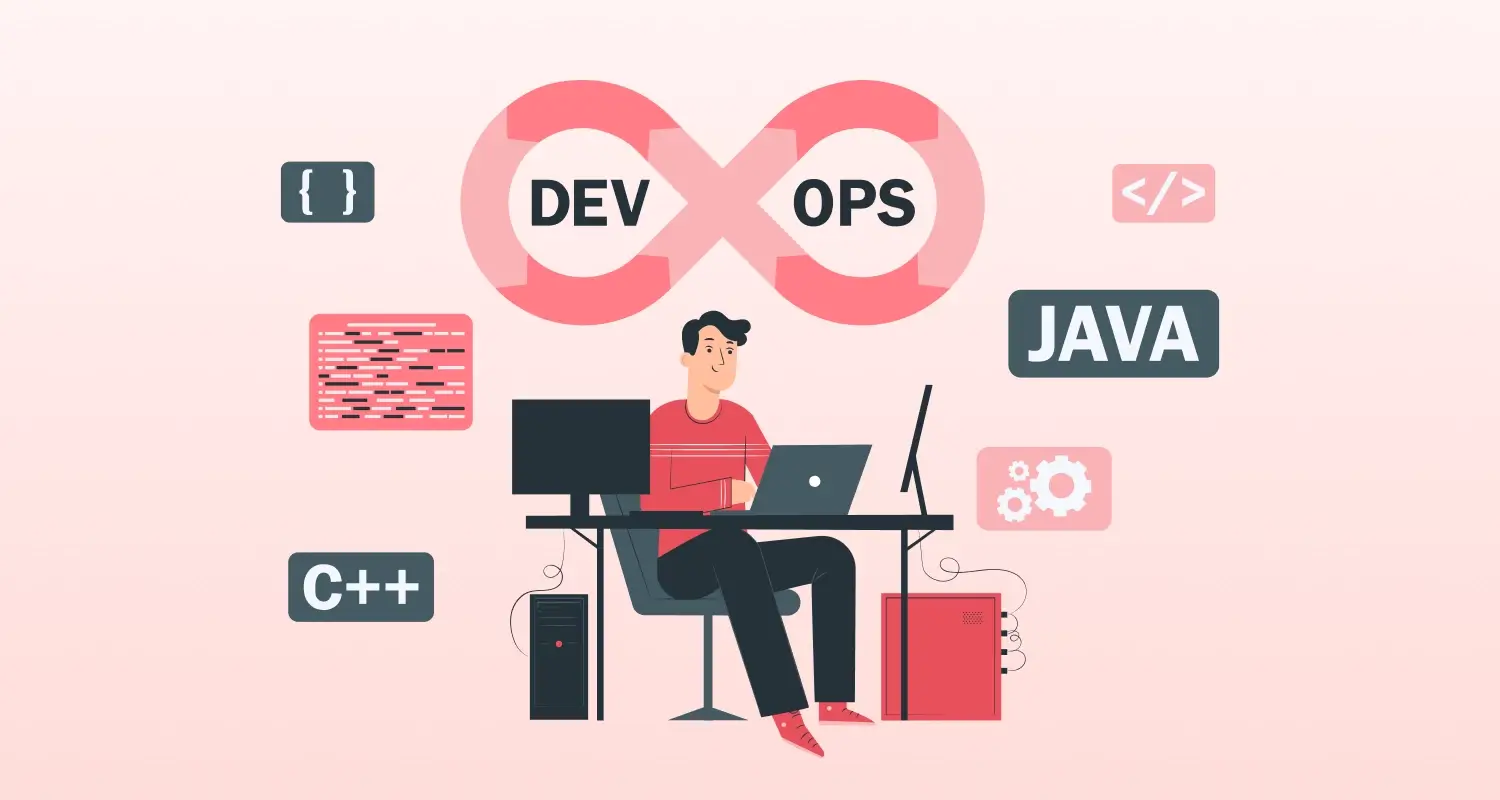Implementing enterprise DevOps for a large-scale organization is a big challenge faced by several organizations. In fact, crafting well organized, transparent, and highly reusable pieces of reactive codes, called composable, adds to the challenge.
You can hire mobile app developers to take care of your app requirements. This blog focuses on how exactly to implement DevOps for the enterprise-level organizations.
When you are dealing with the standard DevOps methodology, the focus is on creating automation in the CI/CD pipeline. It analyzes all the requirements in detail and provides the meaning to each of the automation tasks.
Enterprise DevOps or DevOps for enterprise is all about doing the things at a larger scale in a way that promotes reliability and even availability.
There is another aspect of enterprise that DevOps has differentiated from the very standard DevOps practice. It is the emphasis on security. Following the standard practices of DevSecOps is paramount.
Read More: DevSecOps: DevOps Development Approached Security As A Key Element
Best Practices for the Successful Enterprise DevOps Transformation
Configuration and change management are the two of the most critical aspects from the operations perspectives. It involves automation, monitoring, maintenances, controls, and system configuration all throughout the servers, networks, and also applications.
Get to know about the DevOps Agile development cycle from the experts.
There is the configuration of all the processes according to the DevOps methodologies. These help the software developers and also the operation managers to highly improve on the deployments and the delivery processes.
Here are some of the most popular configuration management tools that are utilized in the industry:
- Chef – Chef is a great configuration management tool that is utilized by the DevOps-oriented organizations for automating the entire infrastructure provisioning. It also helps in the server management.
- Ansible – Ansible is an open-source, software provisioning, and configuration management tool that completely enables the entire infrastructure as a code mechanism.
- Puppet – Puppet is also a great software configuration management tool that is utilized for IT automations. Puppet is leveraged on the platforms such as the IBM mainframes, the Cisco switches, and the Mac OS.
Continuous Integration
The continuous integration allows the developers to completely merge the code changes altogether. The codebases can also further, be updated into the master and the shared repositories.
The master repositories automatically build and also run the application so that the developers can access the various bugs and the errors even. As a huge result, the developers can repair those errors to completely enhance the software qualities and minimize the time required for releasing or integrating the next version very seamlessly.
Here are some of the continuous integration tools that can be utilized in the industry:
- Jenkins – Jenkins is an open-source automated server that is written in java. It allows the developers to completely orchestrate the entire practices of the continuous integration automatedly.
- Gitlab – Gitlab is also one of the most popular automation tools that focus on the continuous integration for the software developments. It assists all the developers in a much faster release.
- Bamboo – the bamboo is also a continuous integration server that automates the management of the software application development and also helps create a delivery pipeline entirely.
Just as an example, FIH, or the international governing body for field hockey actually needed to launch the most powerful web presence before Hockey World Cup 2018 was actually held in India.
Improving their online web experience was the biggest challenge and for that purpose, the organization required the website redesign. During this transformation, CMARIX ended up adopting DevOps engineering practices of the continuous integration by utilizing Jenkins and also achieved zero downtime.
Quality delivery was also ensured while increasing the efficiency of the CI/CD process.
Continuous Deployment and Delivery
The continuous deployment allows the DevOps engineers to automate the entire process from the code commits to the entire production. There is an automation too that is set between the developments and even the delivery stages.
The code automatically updates after passing all the different test cases. All the different test cases are present in the QA (Quality Assurance) environments. The customers shall receive the updated version of the application as the improvements are made.
Well, here are some of the popular tools for the continuous deployment:
- AWS Code Deploy – AWS Code Deploy is a fully managed deployment service from AWS that completely focuses on the error-free continuous deployment of your applications.
Hire AWS developers to fulfill your requirements.
- Octopus Deploy – the Octopus Deploy is a completely automated deployment server that makes it easier to deploy the apps that are written in Java, Asp.net, Node.js, etc.
- Deploy Bot – the Deploy Bot can be utilized to build and deploy the code by following one consistent process. The tool provides support for manual and automated deployment.
Much effort and time are utilized while building and even releasing the enterprise-level software. However, the single releases are the recipes for poor qualities and performance. Instead, orchestrating the continuous delivery of the business applications is the new-age strategy that focuses on the constant improvement and the continuous integration to ensure the delivery of high-quality software.
Tommy Tynja, the Senior Engineering Manager at Spotify gives a good insight on how one can get success with continuous delivery. He says, “To successfully implement continuous delivery, you need to change the culture of how an entire organization views software development effort.”
The most popular tools for the continuous delivery are:
- Buddy – Buddy is a really smart CI/CD tool that is designed for completely lowering the entry threshold to the DevOps. It utilizes all the delivery pipelines to build, test and also deploy software.
- Circle CI – Circle CI is a CI/CD tool that completely provides support for the rapid software development and even deployment. It also automates the user pipelines to ensure faster deliveries.
- Team city – team city is JetBrains’s CI/CD tool that assists you to build, deploy, and also deliver the various types of the software projects. It runs completely in java and can also integrate with Visual Studios.
Continuous testing
Testing is another aspect that most of the people do not give much importance to in a traditional software development lifecycle. However, when you are working towards DevOps adoption, you shall need to follow the practice of automation and continuous testing.
It will help the developers to identify and resolve the error at the earliest stages before the entire software goes into production. Unlike the manual testing, the automated testing is far
more reliable and even error-free. Here are some of the tools for the continuous testing:
- Selenium – Selenium is one of the most popular tools utilized for the cross-platform automated testing. It focuses on the website and the web application testing.
- Applause – Applause provides authentic, real-time feedback on the digital experience qualities to release the high-quality products at a faster rate.
- Blaze meter – Blaze meter is a completely open-source, enterprise-ready continuous testing platform that provides support for performance testing, functional testing, and load testing.
Continuous Monitoring
Well, continuous monitoring is the standard practice of utilizing procedures, techniques, and even the tools that help to measure and track the processes of every development and operations-related lifecycle phase.
This approach shall help you ensure the application’s performance, efficiency, and reliability of the software as it moves from the development to the entire production stages.
Here are some of the popular tools for continuous monitoring:
- AWS cloud watch – it collects, accesses and correlates data on a single platform from your AWS resources to monitor the performance of an application.
- Akamai mPulse – it is a real-time monitoring tool that allows the DevOps teams to collect and analyze the experience and behavior data of users who visit their websites.
- Dynatrace – it provides a single platform with the ability to monitor the entire DevOps technology and environment stack with utmost ease.
Hire developers from software development company in India, CMARIX.
Conclusion
Enterprise DevOps implementation does not have to be too complicated if all the necessary steps are taken care of along with the right approach. DevOps is considerably new to most of the organizations despite the long existence.It has proved to be highly effective in helping the organizations to innovate and bring up the new and improved procedures, capabilities, technologies, and even the tools into practice.
Now, continuously re-investing the entire wheel in terms of DevOps can be pretty challenging for any enterprise with several business decisions to consider. This is exactly where CMARIX can be your trusted partner. We have the capabilities and also the expertise to provide high-end DevOps consulting services to your enterprise worldwide.
So, connect with us and avail our expert DevOps practitioners or hire dedicated developers to build, test, and even deploy faster by accelerating your entire development pipeline.







